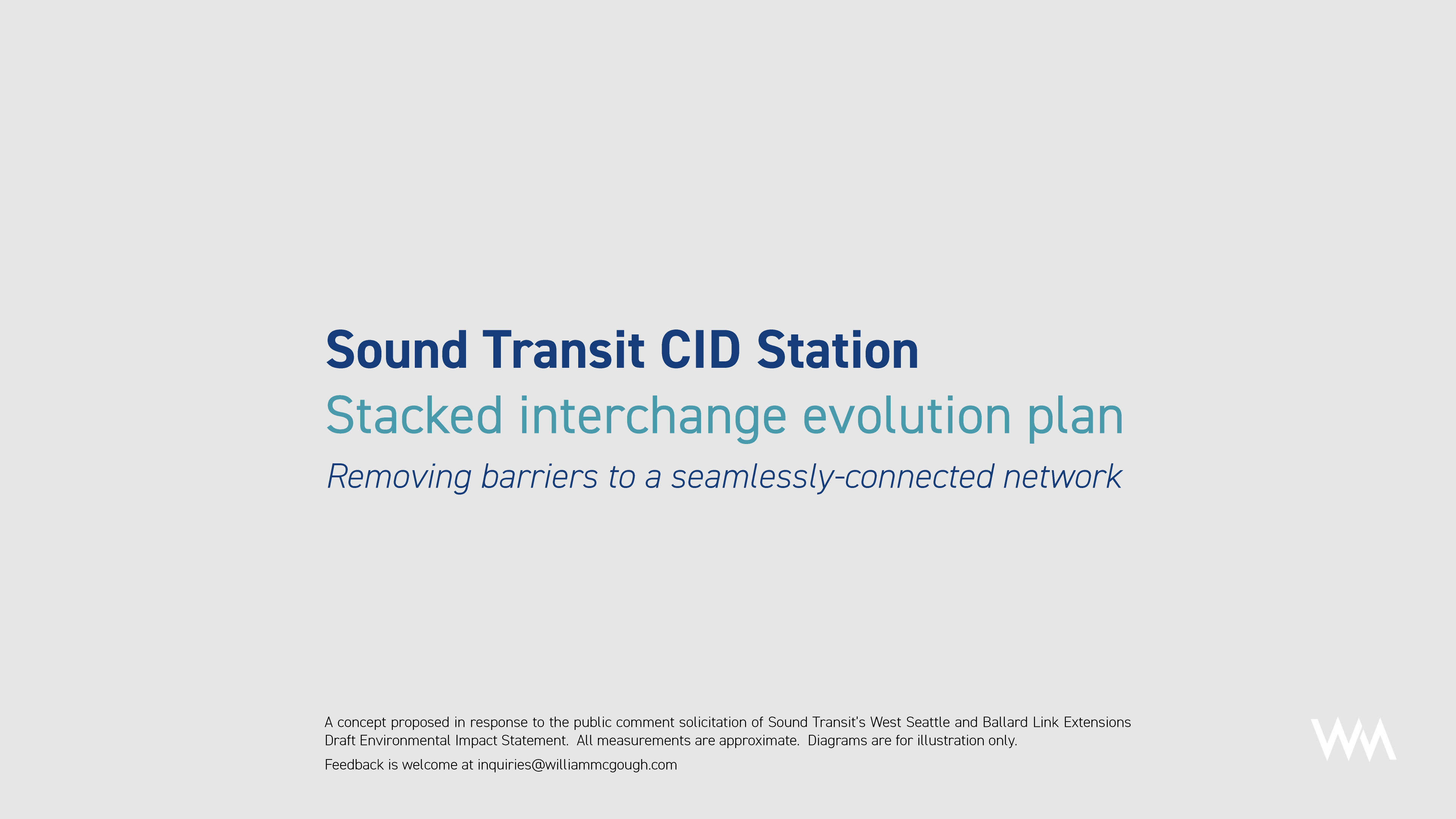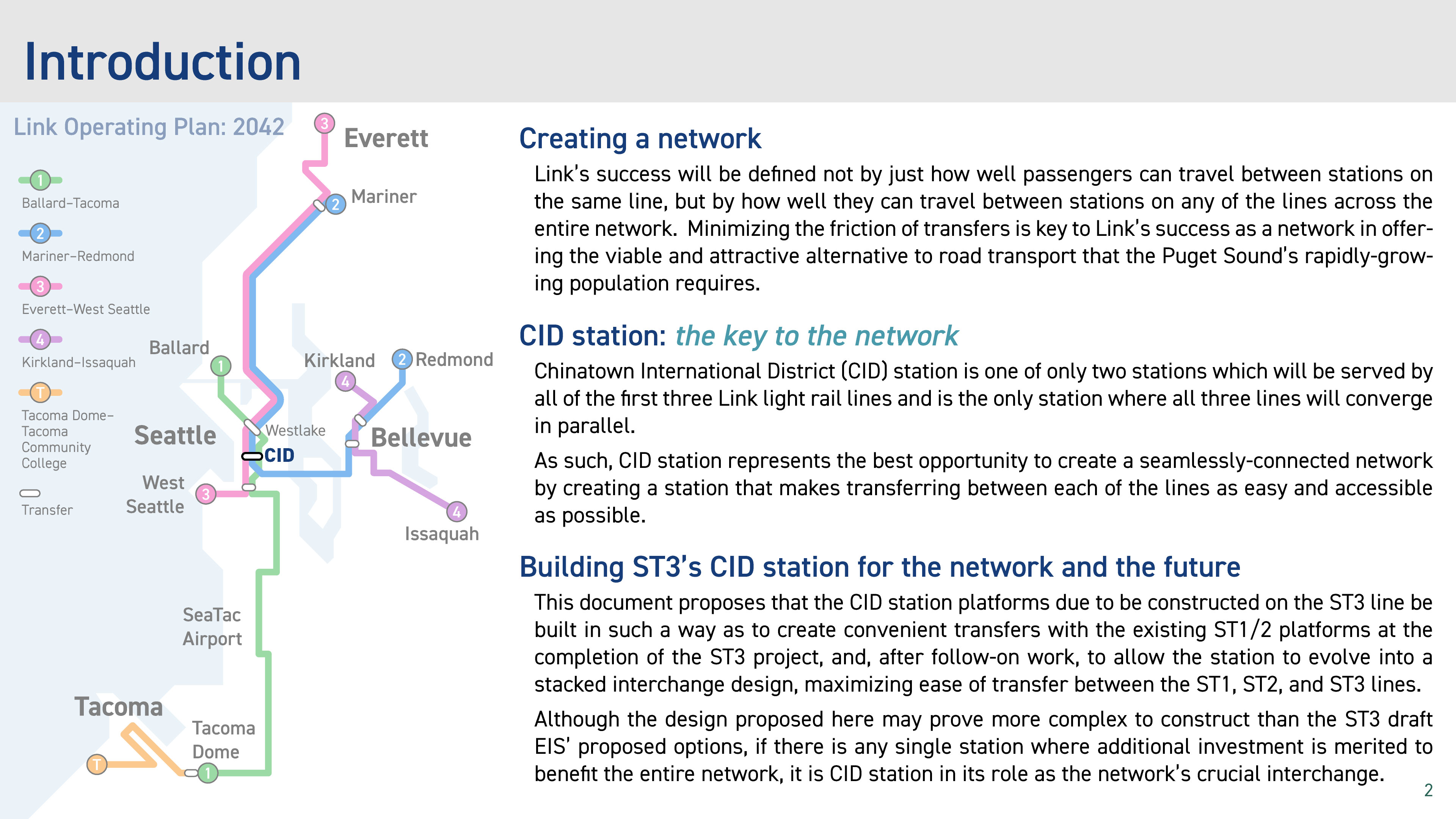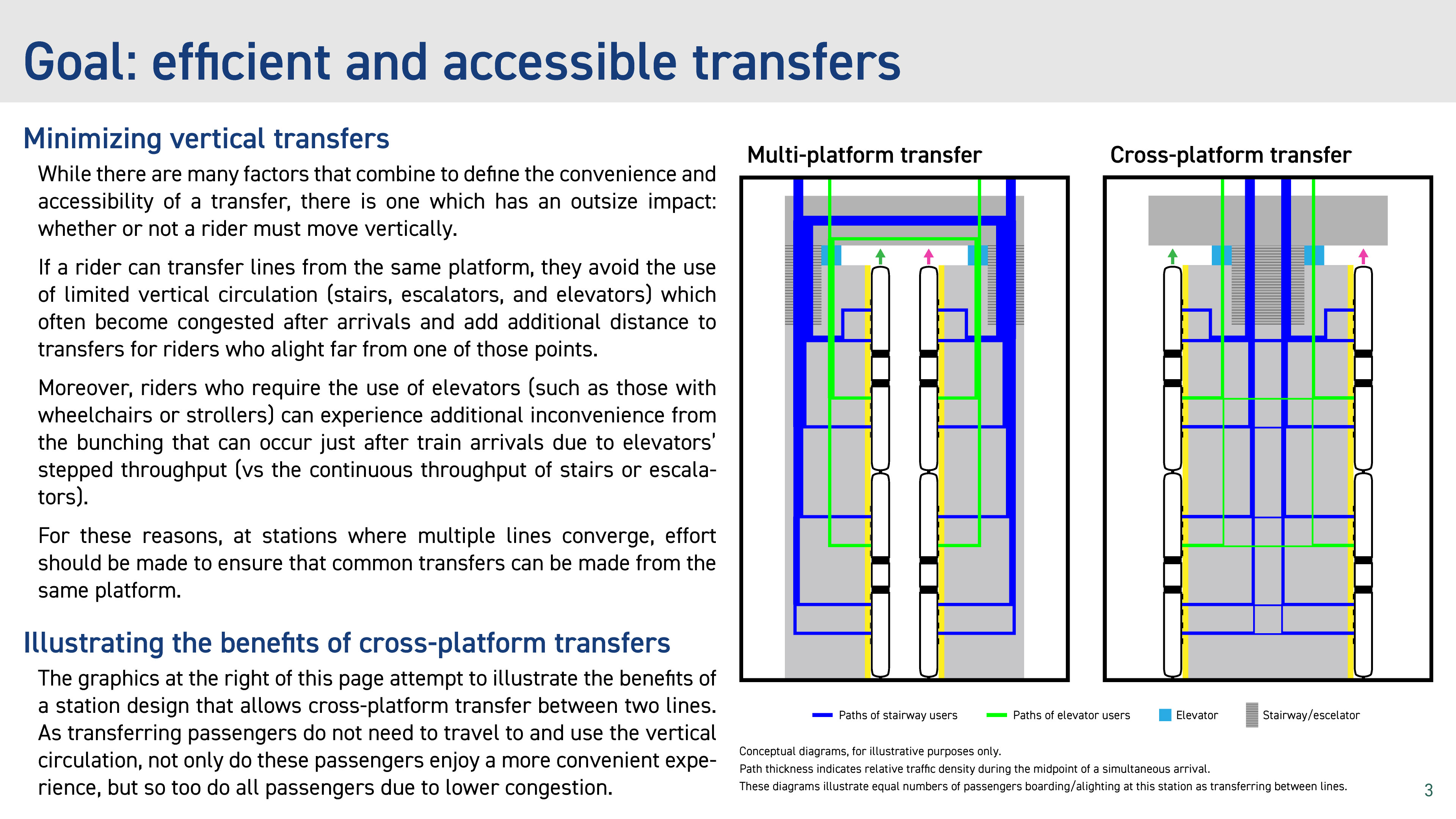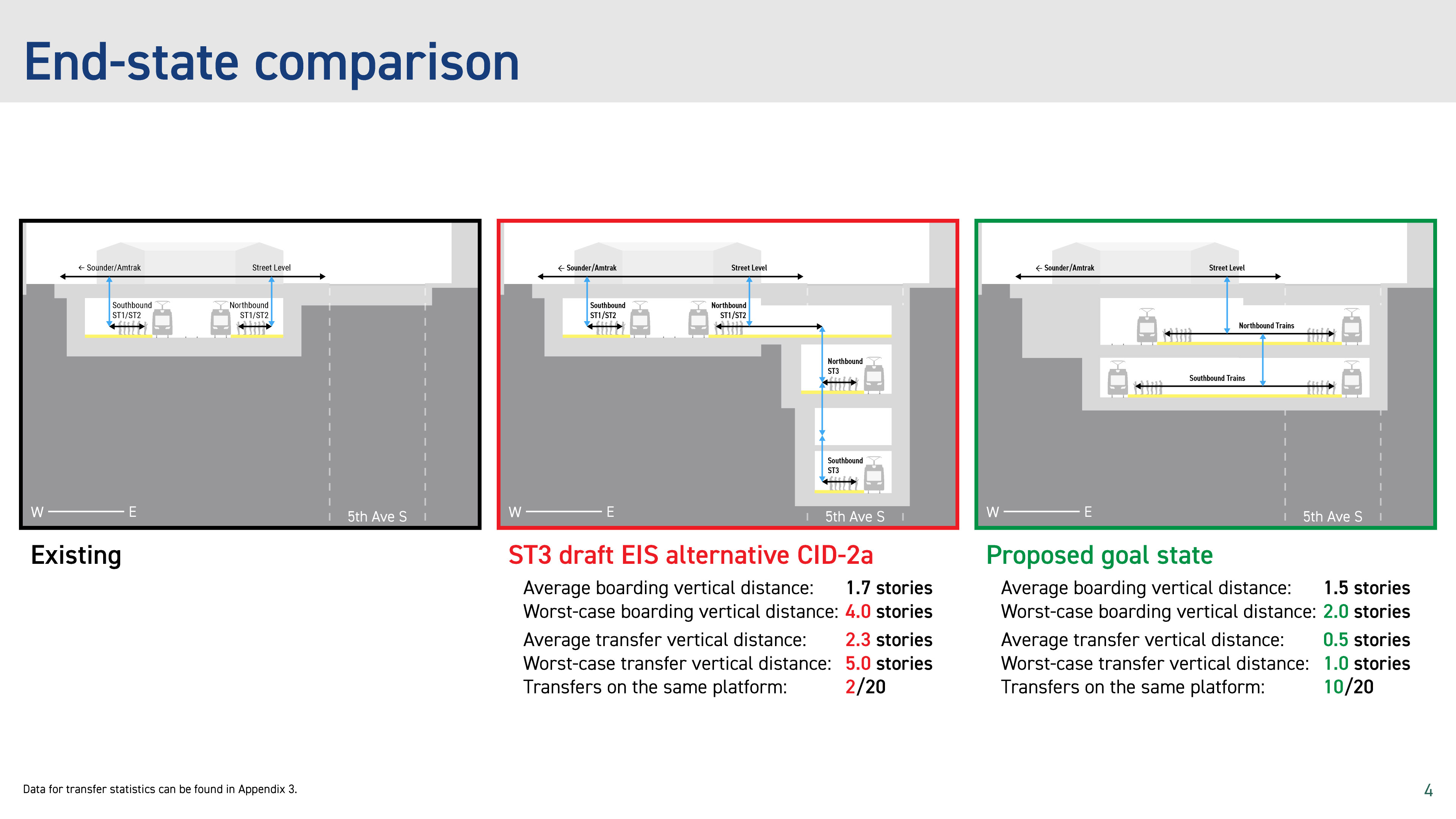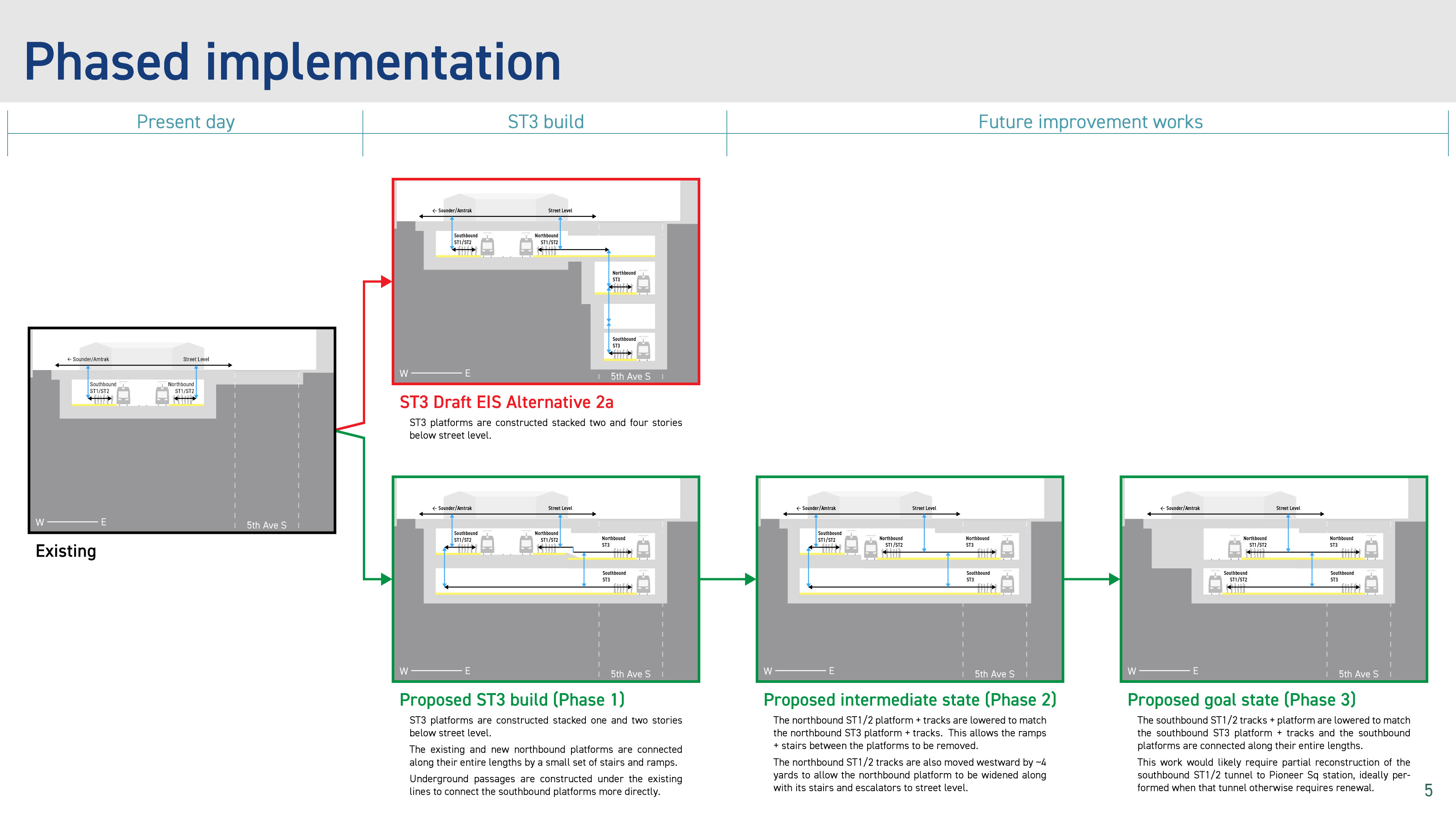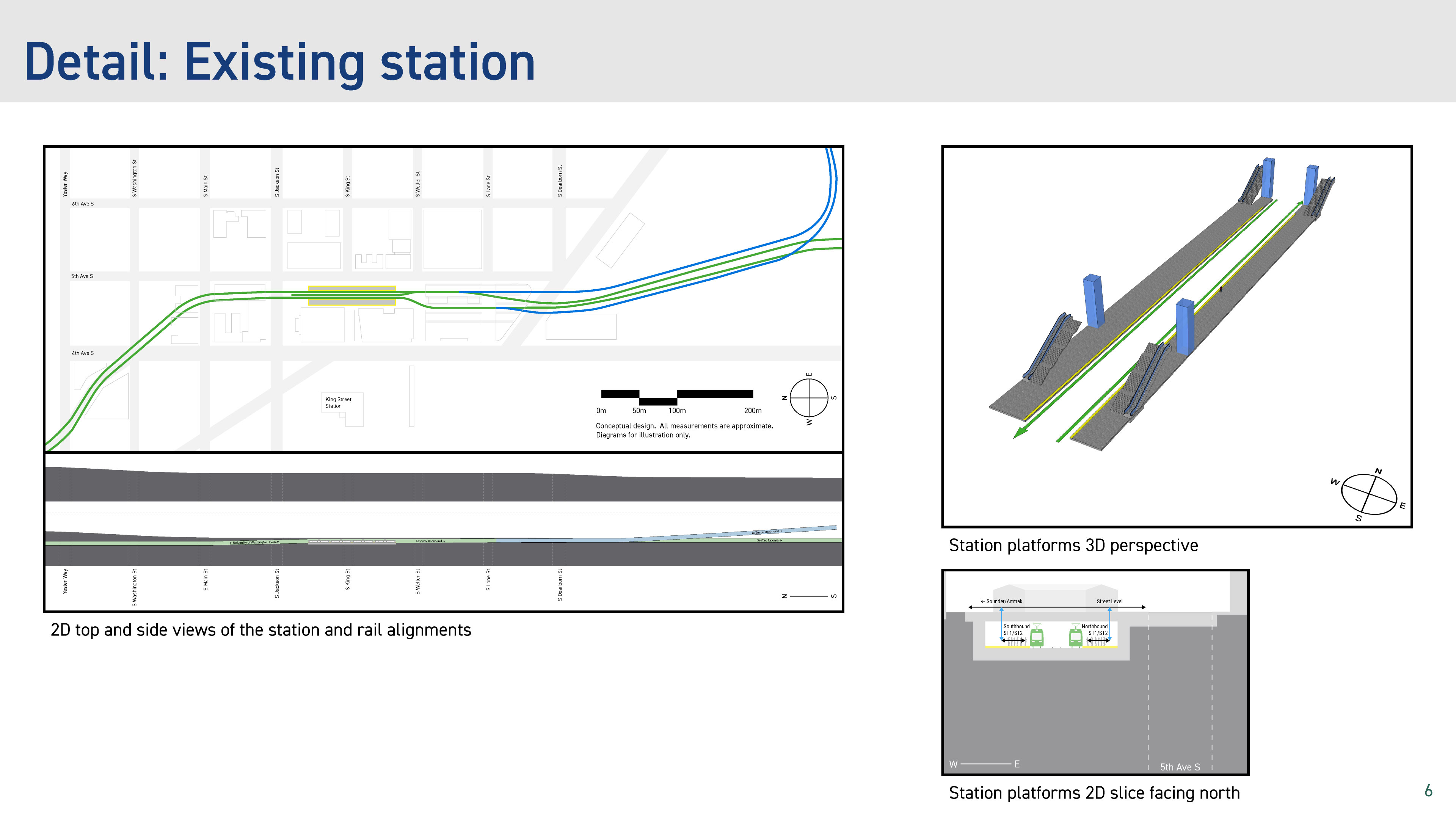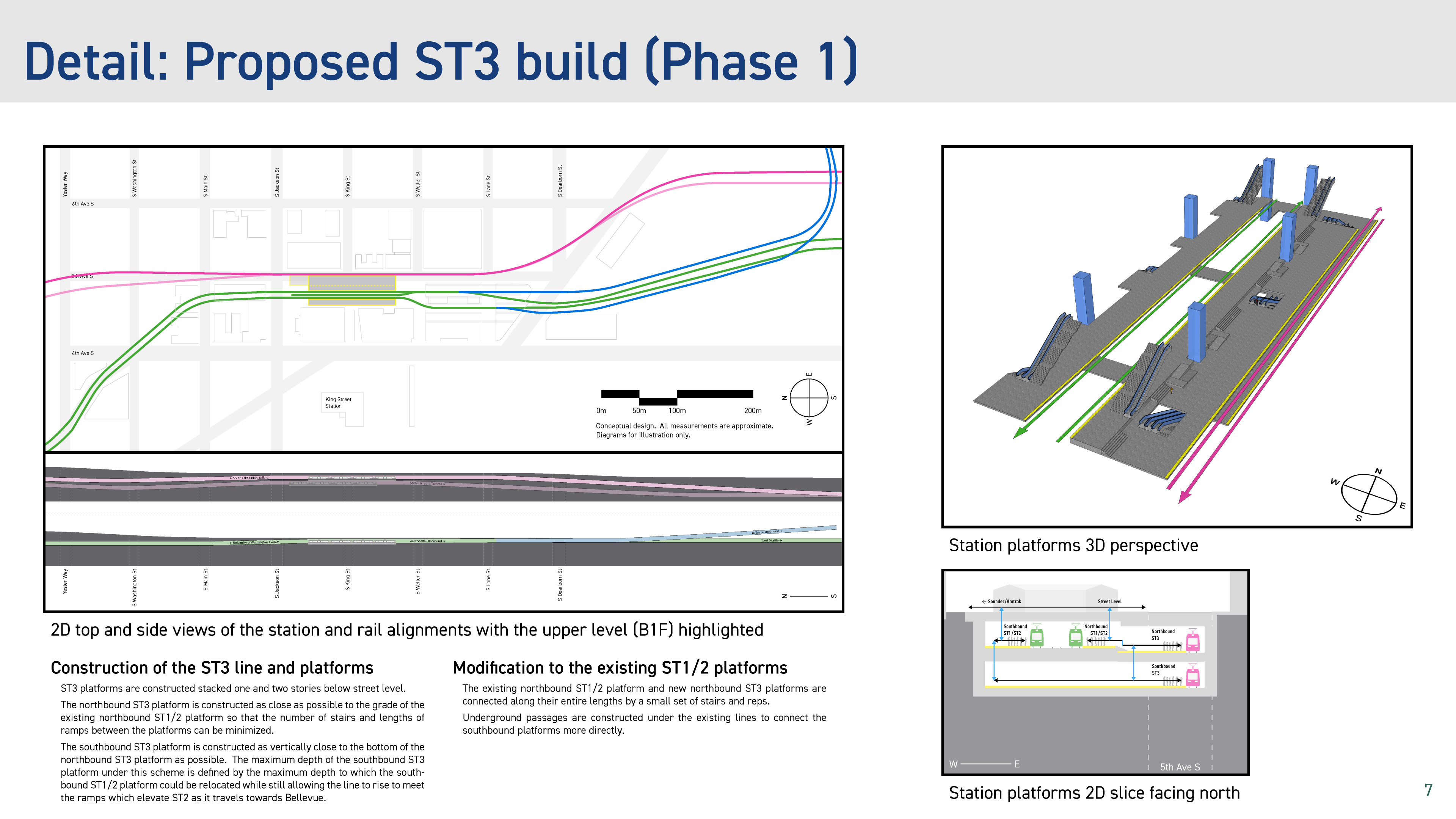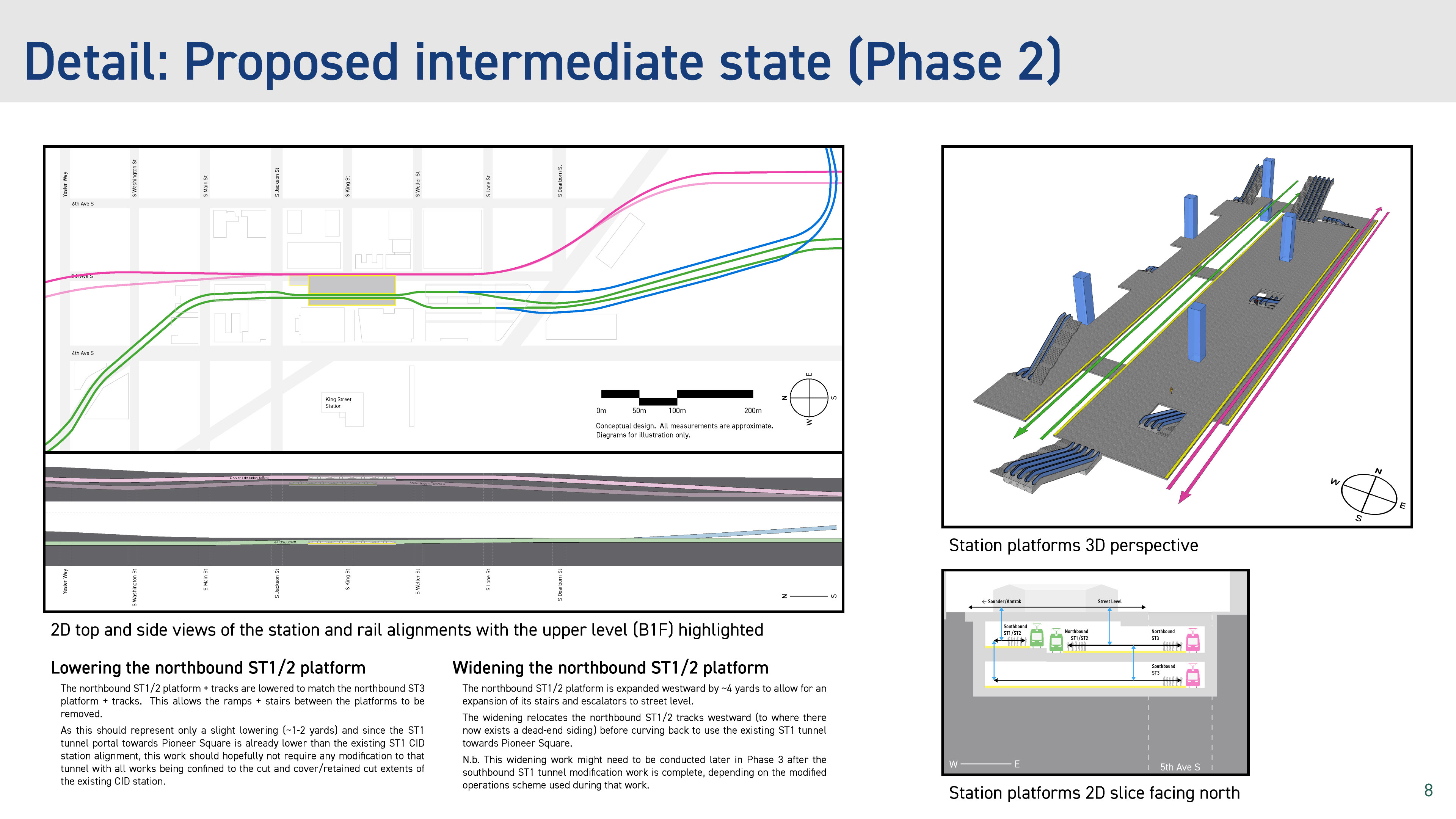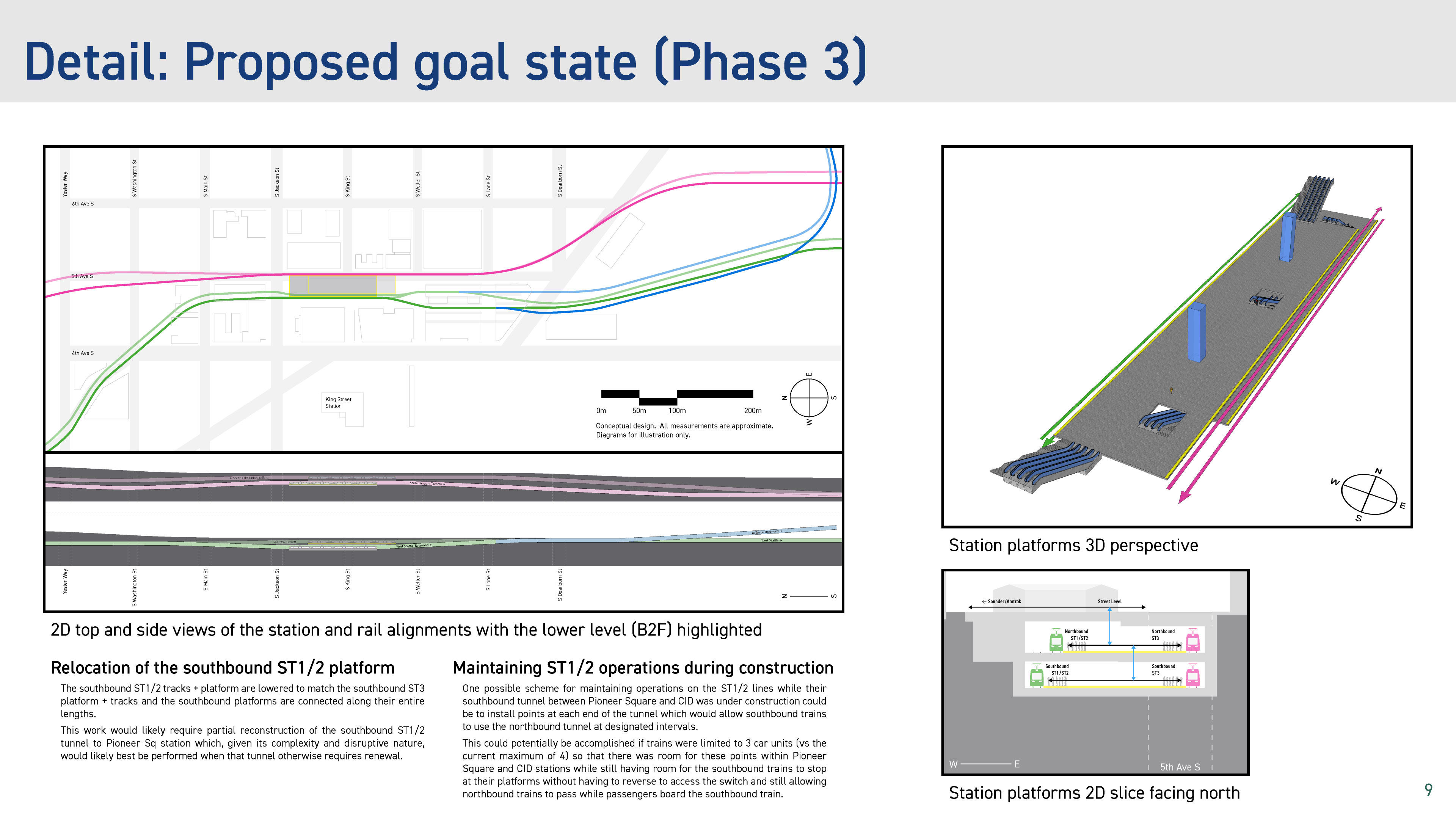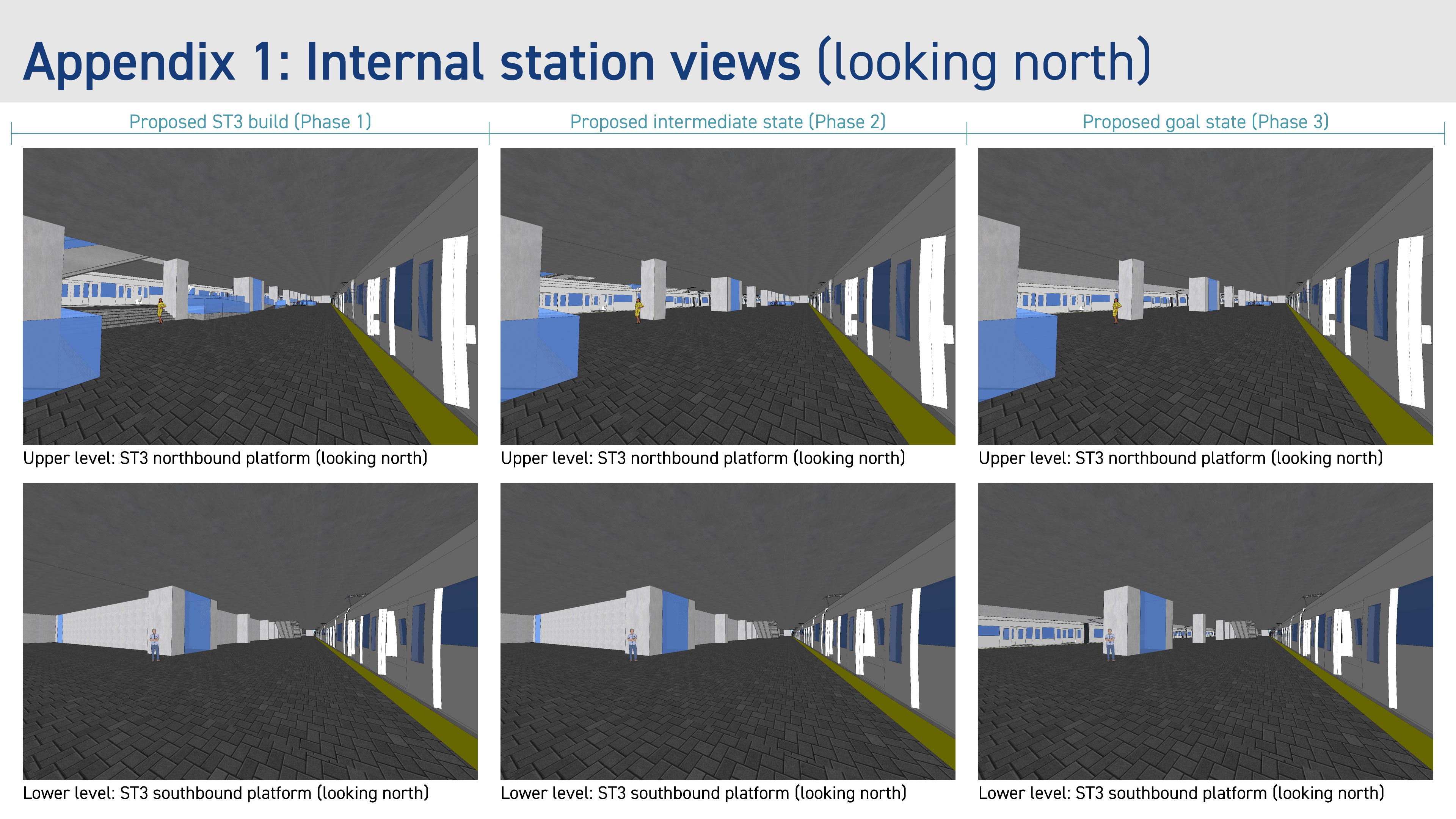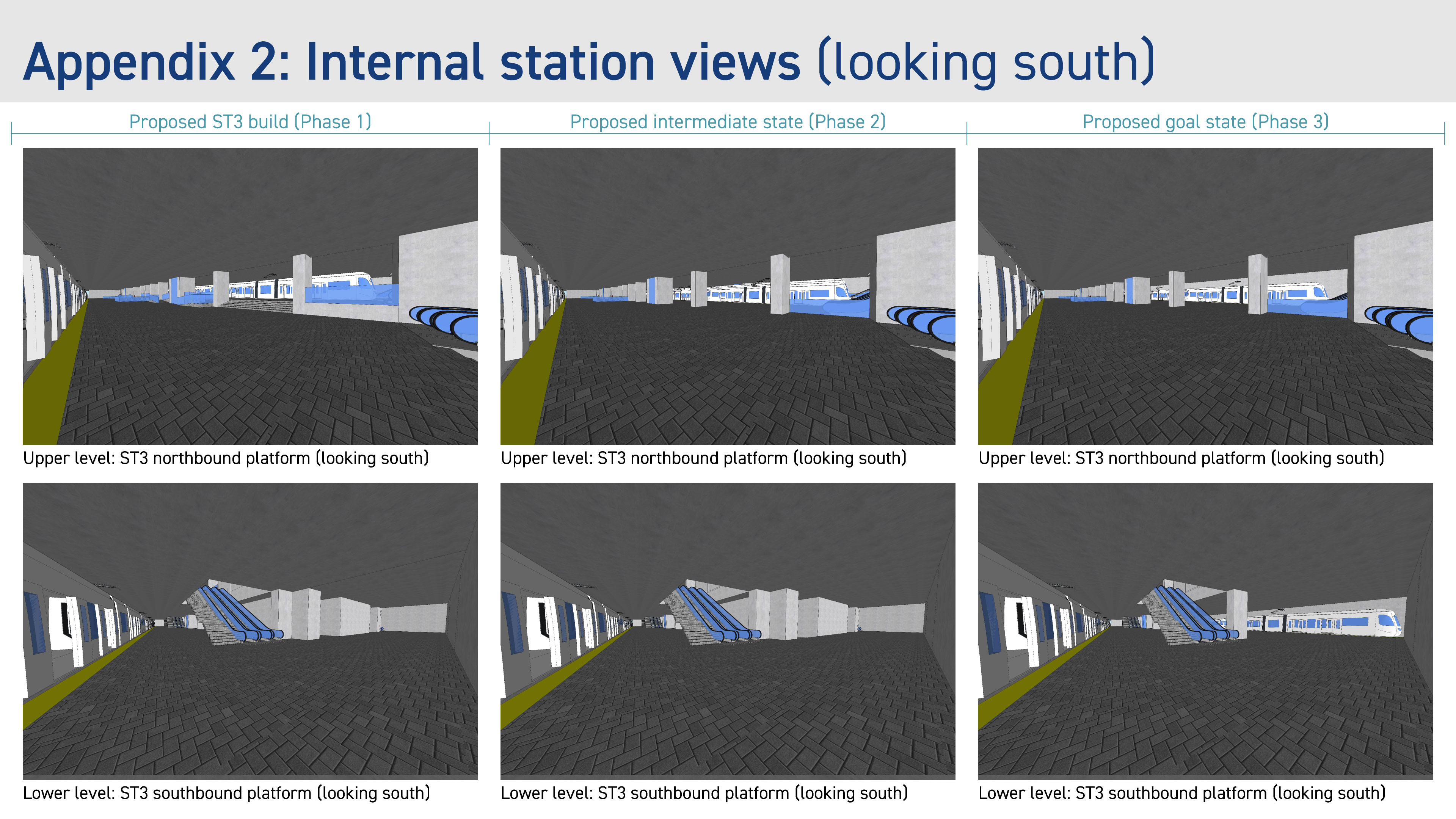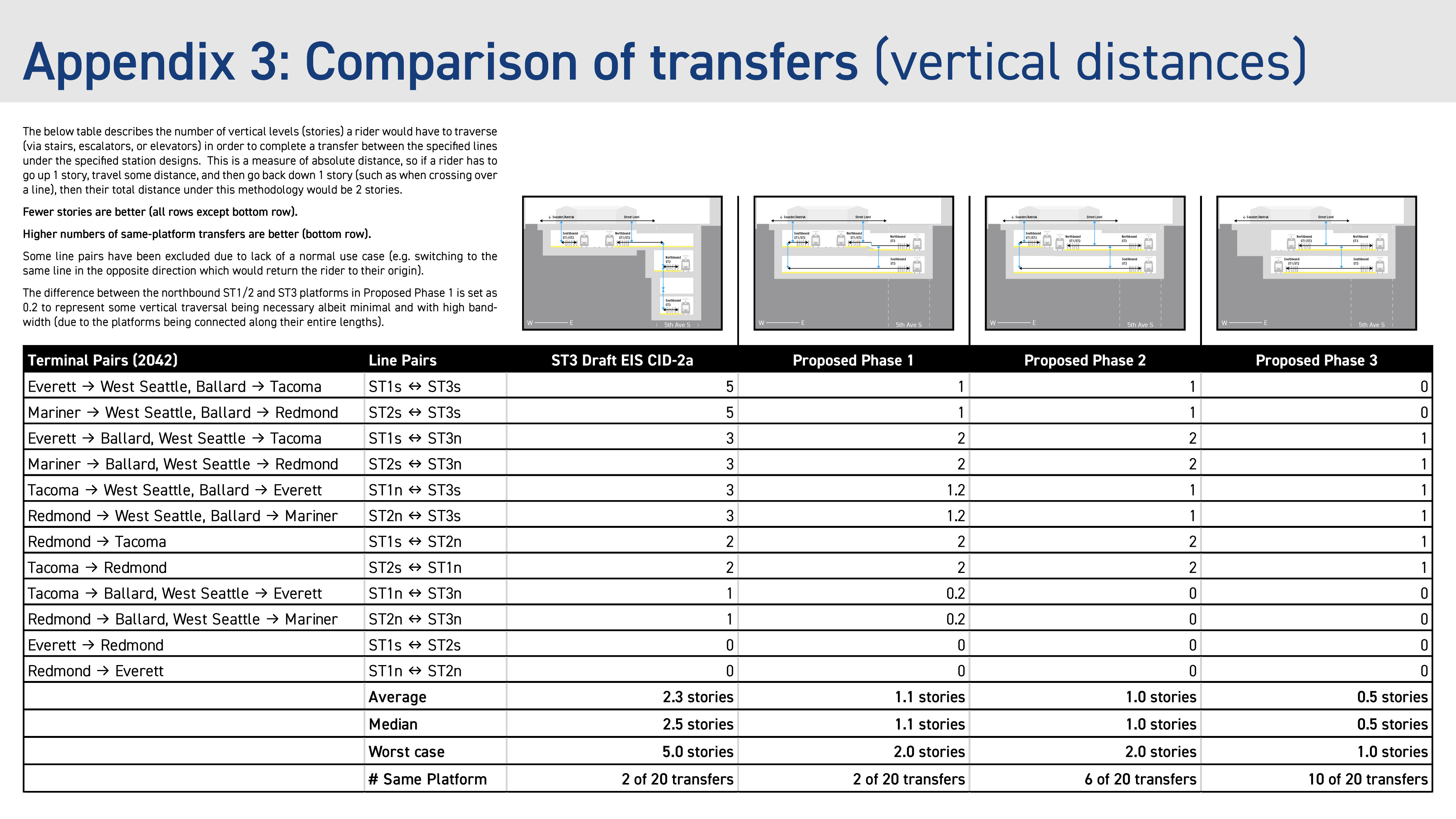ST3 Interchange Station
Proposal for Seattle's ST3 transit expansion project
Introduction
A proposal I submitted as part of the public comment period on the next major expansion to Seattle's mass transit network ("ST3"). I proposded a modification to one of the new line's notional station designs so that it could be combined with a nearby existing station to substantially improve the ease and accessibility of transferring between all of the network's first three lines.
Although my design would be somewhat more complex to construct, I argued that the network effect born of effectively integrating these lines far outweighs that individual consideration, by allowing all riders (whether on foot, using a wheelchair, or pushing a stroller) to access any destination on the network seamlessly – and thereby make mass transit the not just viable but preferable alternative to road transport that our rapidly growing region desperately needs.
Several aspects of this proposal were inspired by the excellent transit network I enjoyed while living in the Tokyo metro area.
The Proposal
